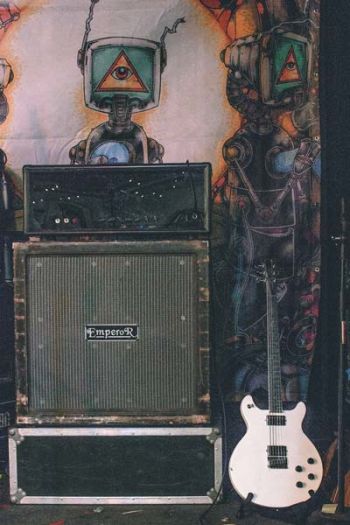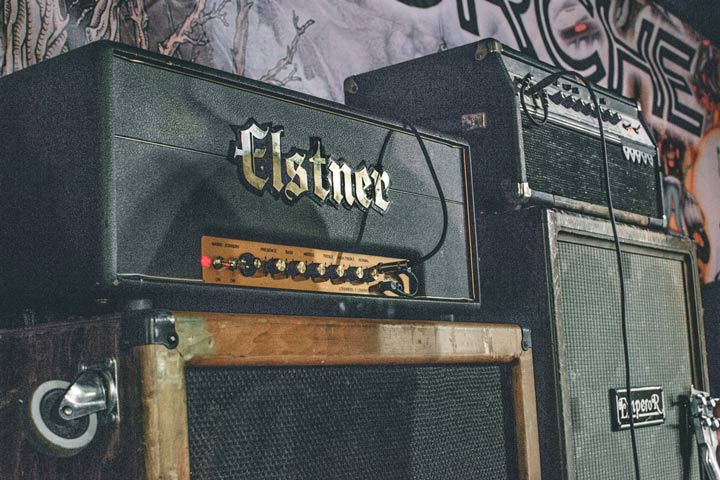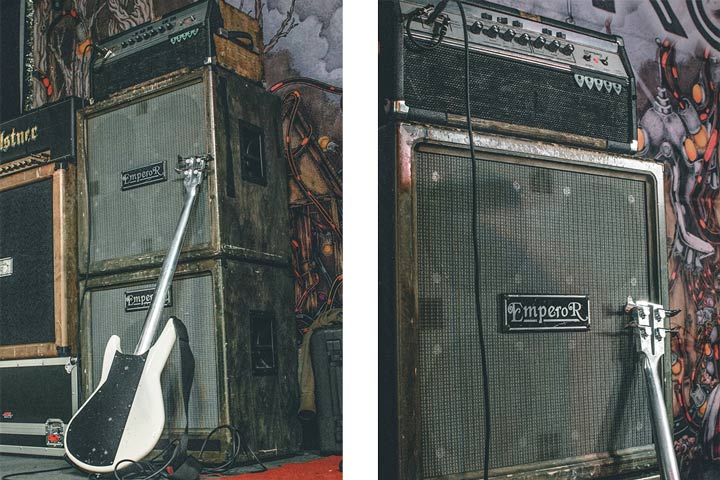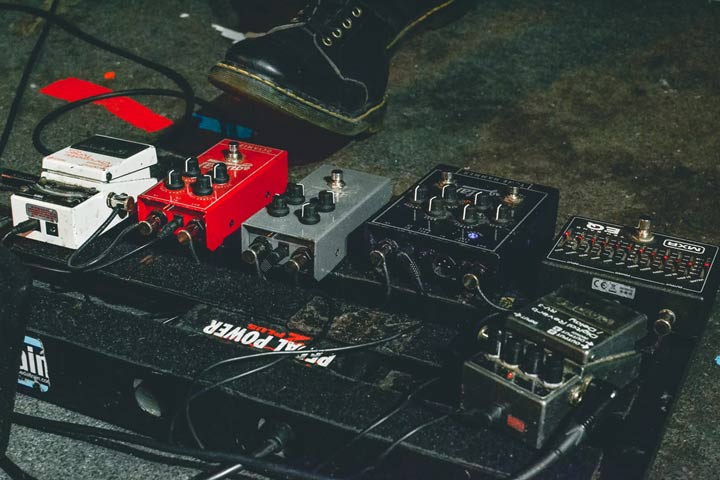All kids who pick up a guitar or bass dream of a day when they can turn everything they own to 11 and shake the foundation of their parents' house. Some get to live that dream. One band of four guys gets to do that every night. That band is Torche. Reverb recently took a roadtrip up to the Catcus Club in Milwaukee to check out the band as they toured to promote their new album, Restarter.
Whether your ear grasps at elements of Black Sabbath — one of the forefathers of what is referred to as stoner rock or doom metal — or more modern bands like Boris or Sunn o))), the combination of droning guitars and grand swathes of low-end grind is infectious and catchy, even whistleable. Some have aptly dubbed it doom pop.
What may sound like a sludgy mess to some is a nuanced set of sculpted tones from a fairly simple gear formula: a great guitar with thick-gauge strings tuned down to A standard (or lower), a high-gain amp pumping 4x12s and a few tried-and-true pedals.


Jonathan Nuñez's Electric Guitar Company Bass (left) and Steve Brooks' Electrical Guitar Company Guitar (right)
Singer Steve Brooks and bassist Jonathan Nuñez each rock models from Electrical Guitar Company (EGC), a brand continuing to innovate where aluminum-necked Travis Bean and Kramer guitars from the 1970s left off. If the weight of a guitar is any indication of tone, the EGC guitars are some of the heaviest around.
On the other side, guitarist Andrew Elstner is slinging a different animal altogether with his German-made semi-hollow Framus Mayfield guitar, something you might more commonly see at a jazz club. While superior build quality runs across the stage, the unsung heroes of the band's gnarly sound are those über-heavy strings (each guitar's low string is a 70-gauge behemoth).
The backline is made of all high-gain amps. The two guitarists each have a Marshall circuit clone powering their 4x12 cabinets. Elstner, who also builds pedals for himself, wired up his own Marshall ’59 Super Lead clone from parts and adorned it with a custom logo with his namesake. The bass rig, on the other hand, is a Magnavox-era Ampeg SVT pumping a full stack of Emperor cabinets, one 4x10 and one 1x15. Played in triplicate, it’s a glorious and ear-splitting affair.

A Marshall '59 Super Lead clone built by Torche guitarist Andrew Elstner

Torche guitarist Andrew Elstner's pedalboard

Torche bassist Jonathan Nuñez's Magnavox-era Ampeg SVT and Emperor cabs

Jonathan Nuñez's bass pedalboard
The function of their pedalboards is more to bring out the best in the guitar/amp combination. Brooks stomps on a simple mix of a Digitech Hardwire SC-2 Valve Distortion, a MXR Phase 90, and a MXR Carbon Copy delay. Elstner’s core board is built around a trio of Digitech Hardwire pedals: the DL-8 Delay Looper, the CM-2 Tube Overdrive and the HT-6 Polyphonic Tuner. He also throws in a Boss DD-5, a Green Ringer and a MXR Micro Amp clone he built. Nuñez’s board is populated with Aguilar Octamizer, Aguilar AGRO Bass Overdrive and the Tone Hammer preamp, with a MXR 10-Band EQ and a Boss RV-3 Reverb to round out the rig.
From the first batch of Emperor cabs the crew dragged in the door, we knew it was going to be loud inside the small room of the Cactus Club. The guys didn’t let us down. It’s always great to see a band on tour, in their element with gear they know and love covered in the dust and grime of a thousand shows. It’s unpretentious road-worn gear like this that thumbs its nose at fake relic guitars and proves its worth night after night. Our ears are still ringing.
